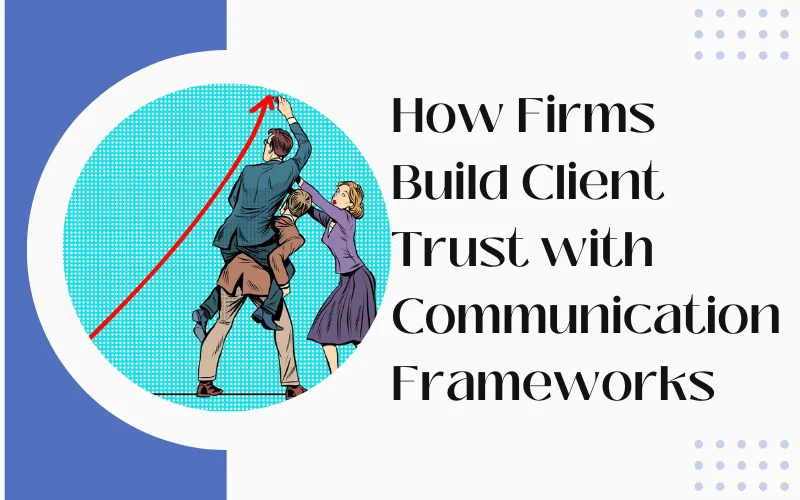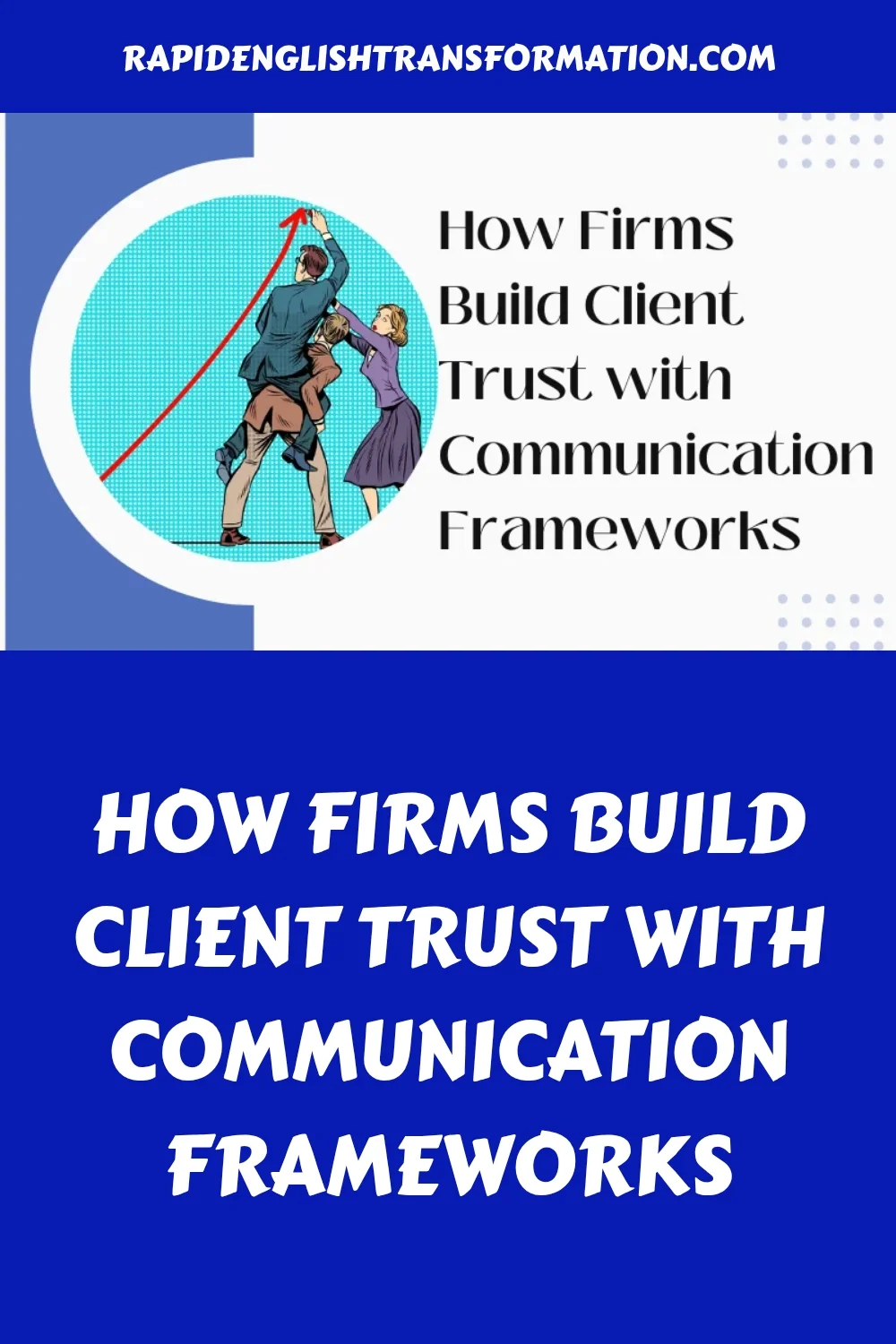How Firms Build Client Trust With Communication Frameworks

Success is built on developing repeatable systems, and that means using communication frameworks. Law firms don’t lose clients because their lawyers don’t know the law. They lose them because clients don’t trust how the law is communicated.
- ❌ Complex explanations confuse.
- ❌ Hesitant language makes clients nervous.
- ❌ Inconsistent messaging weakens credibility.
In a global market, firms need more than “good English.” They need **systems** that make every lawyer sound clear, confident, and aligned.
As the Edelman Trust Barometer shows, clarity and competence are core drivers of trust — especially in high-stakes professional services.
❌
Why Traditional Training Fails Teams
Many firms send associates to:
- **Group classes** — inconsistent quality, irrelevant vocabulary.
- **Generic platforms** — little accountability, no business context.
- **Self-study** — unstructured, dependent on motivation.
These methods increase language knowledge — but not *client confidence*. Clients don’t care if you know another 50 words; they care whether you communicate their case clearly and persuasively.
Research from Harvard Business Review shows that communication clarity directly impacts trust and decision-making in business relationships.
Evidence from Nielsen Norman Group also confirms that plain, structured language improves comprehension and credibility.
Leadership research from Harvard Kennedy School adds that framing and structure determine how messages are received — critical in legal advice and client relations.
✅
Why Communication Frameworks Create Trust at Scale
Frameworks create a **shared language system** across a firm:
- **Consistency** → Every lawyer communicates in a clear, recognisable way.
- **Clarity** → Clients hear structured, concise explanations.
- **Authority** → Framework-driven answers project confidence even under pressure.
This isn’t just about language — it’s about **risk management**. Miscommunication can cost firms deals, credibility, or even litigation.
Stanford’s Web Credibility research highlights that clear presentation and consistent messaging materially affect perceived trustworthiness.
The same principle is explored in The Secret Frameworks Lawyers Overlook and How a Lawyer Won Clients in the US with Small Talk — the same systems that transform individual performance also scale across firms.
⚡
How One Partner Transformed Her Firm’s Results With Communication Frameworks
One partner I coached realised that her team was struggling to convert clients because they lacked a cohesive system. Each lawyer approached client conversations differently — and as a result, their pitches felt disjointed and unpredictable. She recognised that a unified approach was needed, and as a result, the **communication frameworks** I taught her were implemented across the team.
At first, many were resistant; they didn’t see themselves as “salespeople” and felt that systems belonged in business, not law. But once they saw how these frameworks simplified discussions, reduced pressure, and made client acquisition feel natural rather than forced, they embraced the approach — and the results spoke for themselves.
This mirrors what MIT Sloan Management Review reports about performance under pressure — **structure reduces stress**, and clarity drives better outcomes.
🎯
Why Firms Need Communication Frameworks
- Lawyers spend **less time preparing**.
- Teams project **one unified voice**.
- Clients **trust the firm’s professionalism**.
This builds reputation and loyalty — the currency of modern law firms. For how frameworks also impact individual performance, see
From Nervous to General Counsel in 10 Weeks.
🚀
Your Next Step
🔹 The Confidence Script — €147
Affordable entry point for individuals.
- 5 frameworks for clear, persuasive answers.
- 2 live check-in sessions.
🔹 The Clarity Sprint — €249
Serious transformation for lawyers or small teams.
- 10 live coaching sessions.
- Practice frameworks until they’re second nature.
📎 Related Reading
- The Secret Frameworks Lawyers Overlook
- How a Lawyer Won Clients in the US with Small Talk
- From Nervous to General Counsel in 10 Weeks
🔗 External Sources for Reference
- Edelman Trust Barometer 2024 – Trust and Communication
- Harvard Business Review – The Trustworthiness Factor
- Nielsen Norman Group – Plain Language Improves Comprehension & Trust
- Stanford – Web Credibility Research
- MIT Sloan Management Review – The Science of Confidence Under Pressure
- Harvard Kennedy School – How Framing Shapes Leadership Communication
Generated with Pin Generator
⚡ The Influence Pack: Essential Frameworks for Fast Results
Tired of losing impact in English?
Learn how top international lawyers use structure and influence frameworks to win clients, negotiate confidently, and speak with control — **in just a few hours.**
- 📘 Essential Toolkit
- 🎯 Instant Results
- 💬 Designed for Legal Professionals
Enroll now for only £29.99
Start Now →Next step: The Clarity Accelerator — build the full system.
Secure payment • Instant lifetime access

